Wednesday, December 16th 2020

Intel Announces Its Next Generation Memory and Storage Products
Today, at Intel's Memory and Storage 2020 event, the company highlighted six new memory and storage products to help customers meet the challenges of digital transformation. Key to advancing innovation across memory and storage, Intel announced two new additions to its Intel Optane Solid State Drive (SSD) Series: the Intel Optane SSD P5800X, the world's fastest data center SSD, and the Intel Optane Memory H20 for client, which features performance and mainstream productivity for gaming and content creation. Optane helps meet the needs of modern computing by bringing the memory closer to the CPU. The company also revealed its intent to deliver its 3rd generation of Intel Optane persistent memory (code-named "Crow Pass") for cloud and enterprise customers.
"Today is a key moment for our memory and storage journey. With the release of these new Optane products, we continue our innovation, strengthen our memory and storage portfolio, and enable our customers to better navigate the complexity of digital transformation. Optane products and technologies are becoming a mainstream element of business compute. And as a part of Intel, these leadership products are advancing our long-term growth priorities, including AI, 5G networking and the intelligent, autonomous edge." -Alper Ilkbahar, Intel vice president in the Data Platforms Group and general manager of the Intel Optane Group.Intel also announced three new NAND SSDs featuring 144-layer cell memory: the Intel SSD 670p, the company's next-gen 144-layer quad-level-cell (QLC) 3D NAND SSD for mainstream computing; the Intel SSD D7-P5510, the world's first-to-market 144-layer triple-level-cell NAND design; and the Intel SSD D5-P5316, a greater-density, higher-endurance SSD built around the industry's first 144-layer QLC NAND.
With today's Intel Optane technology announcements, Intel continues to establish a new tier in the data center memory and storage pyramid, which combines the attributes of both DRAM and NAND. Intel Optane SSDs alleviate data supply bottlenecks and accelerate applications with fast caching and fast storage to increase scale-per-server and reduce transaction costs for latency-sensitive workloads.
Intel Optane persistent memory is Intel's vision of a memory and storage solution that offers persistence, capacity, affordability, low latency and memory-like speed. With Intel Optane persistent memory, Intel has re-architected the memory and storage hierarchy allowing it to be used as a distinct capacity and performance tier for memory and storage. With this approach, it is possible to create a two-tiered memory architecture where DRAM is the performance tier and persistent memory is the capacity tier. In the case of storage, Optane persistent memory is used as the performance tier to the NAND capacity tier.
Intel Optane persistent memory is attached to the CPU via the double-data rate bus, enabling direct load-and-store access at DRAM speeds; non-volatile, it combines the best elements of memory and storage.
Intel will further strengthen and extend its unique memory and storage portfolio with its 3rd generation of Intel Optane persistent memory, code-named "Crow Pass" and in future Intel Xeon Scalable processors (code-named "Sapphire Rapids.")
Three new NAND SSDs announced today represent new milestones for establishing TLC and QLC as a mainstream technology for high-capacity drives. The Intel 3D NAND SSD 670p is Intel's next-gen 144-layer quad-level-cell (QLC) 3D NAND SSD for mainstream computing. The Intel SSD D7-P5510 is the world's first-to-market 144-layer TLC NAND design and the Intel SSD D5-P5316 is built around the industry's first 144-layer QLC NAND. Intel has been developing these technologies over the past decade
"Today is a key moment for our memory and storage journey. With the release of these new Optane products, we continue our innovation, strengthen our memory and storage portfolio, and enable our customers to better navigate the complexity of digital transformation. Optane products and technologies are becoming a mainstream element of business compute. And as a part of Intel, these leadership products are advancing our long-term growth priorities, including AI, 5G networking and the intelligent, autonomous edge." -Alper Ilkbahar, Intel vice president in the Data Platforms Group and general manager of the Intel Optane Group.Intel also announced three new NAND SSDs featuring 144-layer cell memory: the Intel SSD 670p, the company's next-gen 144-layer quad-level-cell (QLC) 3D NAND SSD for mainstream computing; the Intel SSD D7-P5510, the world's first-to-market 144-layer triple-level-cell NAND design; and the Intel SSD D5-P5316, a greater-density, higher-endurance SSD built around the industry's first 144-layer QLC NAND.
With today's Intel Optane technology announcements, Intel continues to establish a new tier in the data center memory and storage pyramid, which combines the attributes of both DRAM and NAND. Intel Optane SSDs alleviate data supply bottlenecks and accelerate applications with fast caching and fast storage to increase scale-per-server and reduce transaction costs for latency-sensitive workloads.
Intel Optane persistent memory is Intel's vision of a memory and storage solution that offers persistence, capacity, affordability, low latency and memory-like speed. With Intel Optane persistent memory, Intel has re-architected the memory and storage hierarchy allowing it to be used as a distinct capacity and performance tier for memory and storage. With this approach, it is possible to create a two-tiered memory architecture where DRAM is the performance tier and persistent memory is the capacity tier. In the case of storage, Optane persistent memory is used as the performance tier to the NAND capacity tier.
Intel Optane persistent memory is attached to the CPU via the double-data rate bus, enabling direct load-and-store access at DRAM speeds; non-volatile, it combines the best elements of memory and storage.
Intel will further strengthen and extend its unique memory and storage portfolio with its 3rd generation of Intel Optane persistent memory, code-named "Crow Pass" and in future Intel Xeon Scalable processors (code-named "Sapphire Rapids.")
Three new NAND SSDs announced today represent new milestones for establishing TLC and QLC as a mainstream technology for high-capacity drives. The Intel 3D NAND SSD 670p is Intel's next-gen 144-layer quad-level-cell (QLC) 3D NAND SSD for mainstream computing. The Intel SSD D7-P5510 is the world's first-to-market 144-layer TLC NAND design and the Intel SSD D5-P5316 is built around the industry's first 144-layer QLC NAND. Intel has been developing these technologies over the past decade
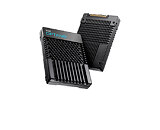
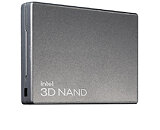
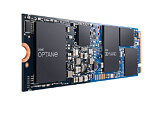
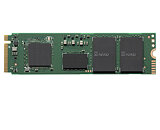
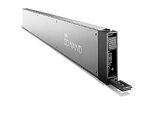
10 Comments on Intel Announces Its Next Generation Memory and Storage Products
www.anandtech.com/show/16182/sk-hynix-to-buy-intels-nand-memory-business-for-9-billion
The 660p *was* a good drive 12-18 months ago because it was a good 15% cheaper than the decent TLC options and performance was adequate. Let's just be clear here, I'm not heaping praise on the 660p; I'm saying that it was cheap and not shit. It certainly wasn't very good but it did the job at a low price.
The 665p on the other hand is a total disaster. It's priced alongside the Kingston A2000 and WD Blue SN550, both of which are TLC and significantly better-performing drives with none of QLC's drawbacks.
QLC was supposed to offer 25% cost reductions by providing the same capacities as TLC with 25% less NAND. I've yet to see any QLC drive priced 25% lower than the TLC equivalent and SSDs are such a small part of the total system cost these days that nobody is going to cripple their build just to save ten bucks.
Intel needs to sell this 670p at 20-25% less than TLC competition, not the 5-10% higher than the TLC competition.
Also, nice words about Optane, but precious little about the details that matter (i.e. performance, capacity, price and whether it's tied to buying some new platform from Intel or not).
I guess this mentality is how people like Donald Trump become president; Facts, logic, and reasoning are all pointless these days.
Given that Intel seem to be gluing more layers to their NAND every 6-9 months and just adding 5 to the model name, there's a half-decent chance we'll get a 675p, 680p, and maybe a couple more beyond that.I think that's just the wording of the press-release being awkward; I suspect all three drives are the same exact NAND with tweaked controller firmware for their different requirements and overprovisioned to different capacities. It sure does look awkward to describe three variants of the same thing the way they did though...